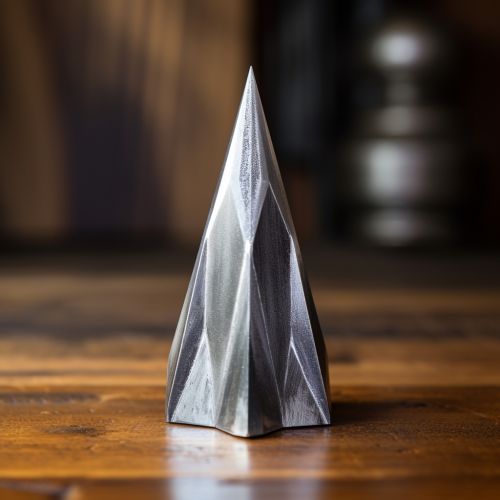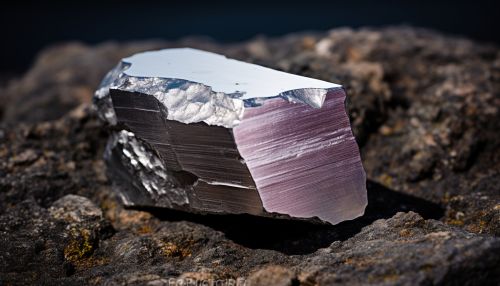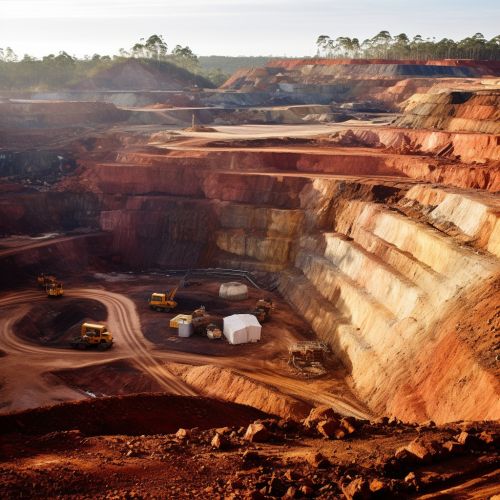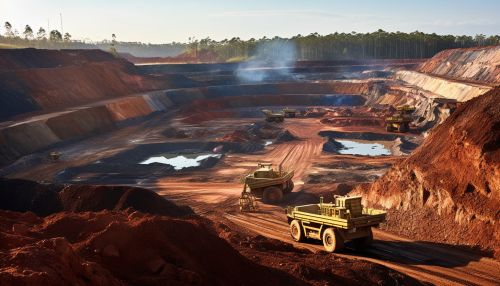Aluminium
Overview
Aluminium (or aluminum in North American English) is a chemical element in the boron group with symbol Al and atomic number 13. It is a silvery-white, soft, nonmagnetic, ductile metal. Aluminium is the third most abundant element (after oxygen and silicon), and the most abundant metal in the Earth's crust. It makes up about 8% by weight of the Earth's solid surface.


Properties
Aluminium is remarkable for its low density and its ability to resist corrosion. The metal and its alloys are vital to the aerospace industry and important in transportation and building industries, such as building facades and window frames. The oxides and sulfates are the most useful compounds of aluminium.
Physical
Aluminium is a relatively soft, durable, lightweight, ductile, and malleable metal with appearance ranging from silvery to dull gray, depending on the surface roughness. It is nonmagnetic and does not easily ignite. A fresh film of aluminium serves as a good reflector (approximately 92%) of visible light and an excellent reflector (as much as 98%) of medium and far infrared radiation. The yield strength of pure aluminium is 7–11 MPa, while aluminium alloys have yield strengths ranging from 200 MPa to 600 MPa.
Chemical
Aluminium is a relatively electropositive metal and thus, it readily forms stable compounds with other elements. It is highly reactive with atmospheric oxygen, and a thin passivation layer of aluminium oxide (4 nm thickness) forms on any exposed aluminium surface. This layer protects the metal from further oxidation. The thickness and properties of this oxide layer can be enhanced using a process called anodising.
Production and Refinement
Aluminium is produced by extracting it from the mineral bauxite, which is refined into alumina, or aluminium oxide. This is then subjected to the Hall–Héroult process, which involves electrolysis in a molten bath of natural or synthetic cryolite. China is currently the largest producer of aluminium, followed by Russia and Canada.


Applications
Aluminium is used in a huge variety of products including cans, foils, kitchen utensils, window frames, beer kegs and aeroplane parts. This is because of its particular properties. It has low density, is non-toxic, has a high thermal conductivity, has excellent corrosion resistance and can be easily cast, machined and formed. It is also non-magnetic and non-sparking. It is the second most malleable metal and the sixth most ductile.
Environmental Impact and Recycling
The production of aluminium from bauxite ore is a major source of carbon dioxide emissions, contributing to climate change. However, aluminium is 100% recyclable without loss of quality, and recycling requires just 5% of the energy used to produce new aluminium, so it is highly beneficial to recycle this metal.
Health Effects
Exposure to aluminium is usually not harmful, but exposure to high levels can affect people's health. Workers who breathe large amounts of aluminium dust can have lung problems, such as coughing or abnormal chest X-rays. Some people who have kidney disease store a lot of aluminium in their bodies. The kidney disease causes less aluminium to be removed from the body in the urine.
